|
Hello and welcome to the Rene Bechard Photography Blog. I have been wanting to start a blog about photography for the past 2 years and I have finally found the time. The reason why this blog is important to me is because I truly want to share with anyone interested, what you need to know to create beautiful, eye catching photographs. When I began photography, it took a long time to hone in the skills that allowed me to develop into a published, paid photographer. I spent hundreds of dollars on photography workshops and classes and guess what. Every time I paid for a class, I came away with minimal tools. No one seems to want to share their secrets, the actual information one needs to know to understand the process of taking and then developing wonderful images. This is exactly my mission with this blog. I hope you will join me in this journey so that you may discover the artist within yourself. Let's go! BEGINNING PHOTOGRAPHYWhat You Will Need * A Camera * A Camera Lens * A Memory Card * A Camera Bag * Tripod or Monopod (optional) * Post Processing Software You can choose a film or a digital camera. Because film cameras are definitely the best choice in image quality, because of the limitations today regarding developing the film, many people choose digital. The flexibility of shooting digital is being able to shoot hundreds of photographs without worry because you can simply delete them. With a film camera, you must be more deliberate with your shots because film is expensive and you cannot review your shots in camera and delete the bad ones.. Also the expense of developing film compared to digital photographs which are developed or post processed on your home computer. Keep in mind, the skills you will learn will transfer over to all cameras. This blog will focus on digital cameras. And the digital cameras on the market today are amazing! Even the smallest, most compact point and shoot cameras produce bright, sharp photographs. Choosing a camera can be intimidating because there is so much information out there on the internet. What it does come down to is your budget. Some smartphone cameras are amazing and have taken award winning photographs however if you are serious about learning photography, you must choose a camera with the ability to change lenses and camera settings. So let's take a look at some cameras that I find interesting for all budgets. POINT & SHOOT The basic point and shoot is great as a pocket camera. They do not have interchangeable lenses but do offer zoom lens capability built in and some brands/models may offer image control. The price range for these cameras range from $99 - $175. The next group of point and shoot cameras are those that offer limited image control and the lens continues to be built in, offering zoom capability. These cameras do offer more image control and can produce lovely photographs. The price range for these cameras range from $200-$500. DSLR - Digital Single Lens Reflex The Digital Single Lens Reflex (DSLR) comes in a variety of models specific to each brand. A very important component of all DSLRs is understanding the sensor. The DSLR sensor is what captures the photograph you take. DSLRs come in different sensor variations with the most common being FULL FRAME or CROPPED SENSOR APS-C FRAME models. This is crucial to understand before you make a purchase. The standard Film Camera or SLR takes an image on a 35mm film negative. 35mm is the size of the square on the negative film which when developed produces a print. Also, the 35mm square is the size of the sensor on a Full Frame DSLR camera. The cropped sensor or APS-C sensor varies in size when comparing brands. Refer to the graphics below for a good understanding of sensor sizes. DSLR cropped sensor cameras are less expensive than the full frame cameras. Most beginner photographers start off with a cropped sensor camera and once they are bitten by the photography bug, they eventually purchase a full frame sensor camera. Most serious photographers, pro and hobbyist have at least 1 cropped sensor and 1 full frame sensor camera. The hardest choice is choosing which brand to invest in and believe me, it is an investment that is hard to change once you've started purchasing lenses. I went with the Canon brand because their cameras were more affordable for my budget. I invested in the Canon brand and I simply cannot afford to switch to another brand at this point. My strong advice is to do your research regarding pros and cons of all brands within your budget lane. I would also recommend that you stay away from the camera kits. They look attractive however most kits include cheap lenses which you will regret afterward, trust me. Buy a great lens to accompany your camera from the beginning. The rule is that you should expect to pay the same amount for the lens as you do for your camera. Why? Because a good lens is made from better glass which provides sharper, cleaner images. Cheap lenses simply do not perform well and many have trouble with the auto focusing. Once you have decided on the brand, the next decision is which model to choose. Yes, budget plays a huge role as you must consider purchasing a lens too. If you are confident that you will enjoy photography and are serious about learning the techniques to become a good photographer, I would recommend purchasing a model that falls into the Hobbyist/Pro lane. If you are interested in learning your camera and only intend to use it to photograph family, friends and pets along with some creative shots in the mix, then you will be safe purchasing one of the brands lower lane models. Now do not feel for one moment that a lower tier camera is cheap. They are not and will work beautifully. There are specific lenses for APS-C - Cropped Sensor Cameras and those lenses will work work on a Full Sensor Camera however you will get vinyetting, i.e. a dark border surrounding the image. Lenses made for full frame sensors work fine with cropped sensor cameras. You will not notice anything abnormal however since the lens was created for a full frame, on a cropped sensor it will be zoomed in on your subject. You will not notice this unless you had a full frame camera, snapped a photo and then placed the lens on the cropped sensor camera, snapped a photo and then compared. See the image below. The cropped sensor image is the light lighted center. To capture everyone in the photo as the full frame sensor shows, you would only need to step backward. DSLR Cropped Sensor Cameras run between $250 -$1,500 DSLR Full Frame Cameras run between $1,400 - $10,000 You may also consider buying used! I have had excellent experiences buying from the website; https://www.keh.com DSLR ACTUATION A digital cameras actuation is the cameras shutters count, the number of photographs your camera has taken. It is important to realize the brand/model you select as once you have exceeded the shutter life expectancy of your camera, it will display an error code and you will not be able to take another photograph. At that point you will have to replace the camera shutter. I can only convey to my readers my experience with Canon as this did happen to me using my Canon 60D, my first DSLR purchase. I received the E30 message in the middle of a photoshoot. I called Canon and they informed me my shutter count expired and it would cost $500 to fix the camera by replacing the shutter. Buying this model new is $900 so I decided to not have the shutter replaced. The Canon 60D actuation is 100,000 shots. Since I am a busy photographer and also do time-lapse photography, where one session can easily accumulate 1,000 shots, this camera lasted me 3 years. When I purchased the camera from a reputable Canon dealer, nothing was ever conveyed about a cameras shutter count so it was a huge disappointment to learn this unfortunate reality. Another disappointment with the Canon brand is that you cannot find your cameras shutter count on most models unlike Nikon, Sony, Pentax, Olympus and other brands. Canon representatives will tell you that you can bring your camera to a Canon dealer and they can retrieve that information however that only applies to specific lower tier models. If you would like to send your camera back to Canon to have your cameras shutter count determined, you have to pay to ship your camera to their factory service center and you also have to pay for a service, such as a sensor / camera cleaning for Canon to convey to you, their customer, the shutter count. The lowest fee quoted to me would be $250 for that information. I share this experience with my readers to convey a monumental disservice by the Canon corporation to their customers. So you see, when choosing a camera brand, there is much to consider. MIRRORLESS CAMERAS DSLR cameras use a mirror inside the camera body to bounce light onto the sensor. A mirrorless camera bounces the light directly onto the sensor. Mirrorless cameras are relatively new and are becoming popular. They are lightweight and much smaller than a DSLR. They are also more expensive than DSLR. Think of mirrorless cameras as a more sophisticated version of a point and shoot camera where you are able to change your lenses and camera settings. Mirrorless cameras must use mirrorless camera lenses hence DSLR and mirrorless lenses cannot be interchanged. MEMORY CARDS Cameras need a memory card to store your photographs as you take them. Memory cards are placed into your camera and can be removed and inserted into a memory card drive which is connected to your computer to load your digital images onto your P.C. for post processing. Many people upload their image data directly from the camera without having to remove the card by either using a cable that attaches to your camera and computer or using by using WIFI connectivity. Cards on the market have various data limit sizes and speed writing abilities. Depending on the type of slot your camera uses will determine which style you need. Typically it will be an SD, SDHC and SDXC and for some PRO cameras, you will have an additional slot for Compact Flash. SD (secure digital) are the oldest, least used with a storage limitation to 2GB. SDHC (high capacity) store up to 32GB of data SDXC (extended capacity) store up to 2 terabytes or 2000GB. COMPACT FLASH or CF is an older card and offer pro cameras much faster read/write speeds and come in various storage sizes. Do not skimp on the speed of your card. You want a fast writing card because as you are taking pictures, you camera is writing that image onto your memory card. The faster the card allows your camera to write the image, the faster you can take the next image. This typically applies to cameras when shooting multiple frames per second. If that is your intent, you do not want your camera to flash BUSY in your viewfinder as it is writing your data and you are missing important shots. The most popular brand is the SanDisk Extreme Pro. Compare SDHC and SDXC cards to choose the best option for you. These cards will cost you $35.00 - $200.00 depending on the storage size and write speeds CAMERA BAGS Storing your equipment is IMPORTANT! I cannot stress this enough. You do not need an expensive, fancy photography bag. A thoughtful suggestion is to look ahead and choose a bag that will allow for some gear growth. As you develop your skills, you will more than likely want to purchase new lenses and other accessories. It is smart to have a place to store your equipment to protect it. My favorite bag is the Amazon Basics Backpack. It has a large enough storage area with internal and external pockets to store batteries, cleaning cloths, even a tablet. I recommend this bag since I have owned mine for 8 years and it is still in great form. TRIPODs and MONOPODs Sooner or later you will want a tripod. Again, this comes down to brand selection and afterward model selection. Some are made of plastic (least expensive and least durable), aluminum (most common but for heavy duty tripods can be heavy), carbon fiber (light, durable and very expensive), and wood (heavy, used mostly for medium format cameras outside). Tripods are important when shooting time-lapse photography, shooting in low light and when using zoom lenses. A tripod will correct conditions where your hand held shooting creates camera shake resulting in blurred images. Monopods will also aid in lessening camera shake however not at efficiently as a tripod. You will notice sports photographers using monopods. They provide extra stability without having to set up a full tripod. POST PROCESSING As the negative film from a SLR camera must be developed and then printed, digital photographs are developed in computer software using programs such as Adobe Photoshop. This post processing is equally as important in predicting eye-catching images as the taking of the photograph. Adobe Photoshop is the most popular photography processing software however there are many other programs, some free, that you can use. I will be covering post processing in a later entry sharing the secrets I have learned. END of Introduction & Beginning
0 Comments
Leave a Reply. |
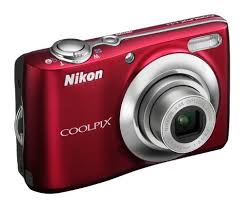

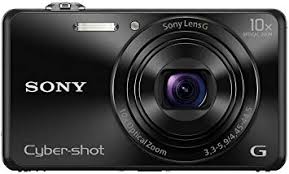


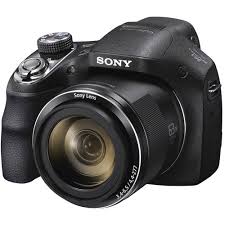
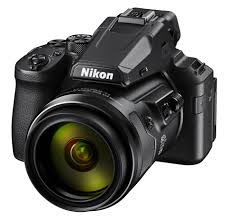



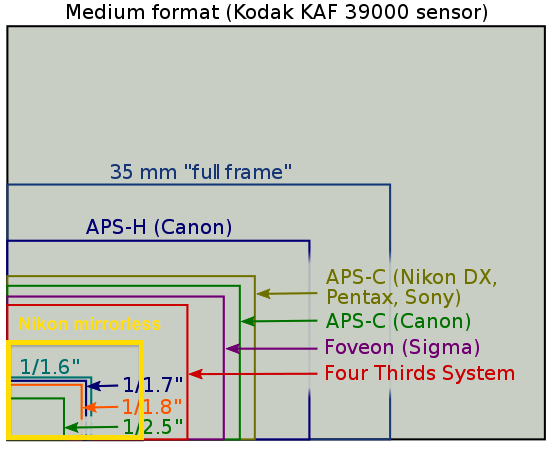

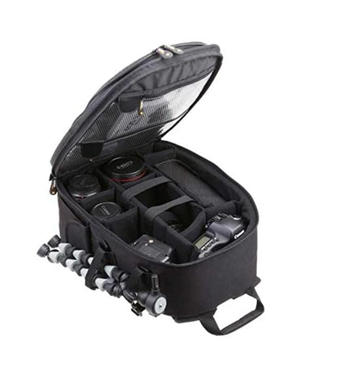
 RSS Feed
RSS Feed